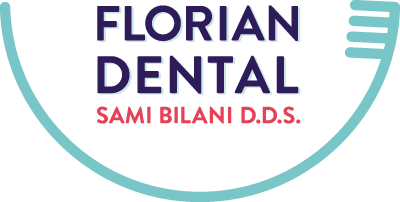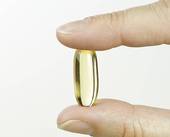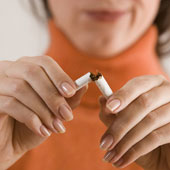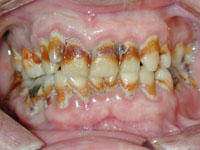Dental Hygiene Considerations
- Although fat intake may have a positive effect on dental
health, the medical history of the patient needs to be consid-
ered when providing nutritional counseling. - Lipids provide a source of energy, 9 kcal/g, whereas carbo-
hydrates and proteins provide 4 kcal/g. - Fish consumption may have a favorable effect on blood
platelets and other blood clotting mechanisms, reducing the
risk of clot formation. - Evaluate your total fat intake. Everyone
needs adequate amounts of fat to allow protein to perform
its functions of building and repairing. If total energy intake
is inadequate, healing is slower. Also, inadequate fat intake
could lead to secondary deficiencies of fat-soluble
vitamins. - Foods such as nuts and certain cheeses (cheddar, Monterey
Jack, Swiss) may protect teeth against acid attack, especially
when consumed after fermentable carbohydrates. Even
though they are generally considered nutritious foods, they
have a relatively high fat content.
- Because omega-3 fatty acids may be beneficial to health,
determine your frequency of fish consumption. An
increase in fish consumption is recommended for most
patients, but some fish, especially mackerel and tuna, should
be consumed in moderation because of their mercury
content.
- Do not advocate indiscriminate use of omega-3 fatty acid
supplements. Fish oils may have a negative effect on blood
glucose levels in people with diabetes mellitus.
Intakes of more than 3g should be under a healthcare provider’s supervision. - If you are taking anticoagulants or aspirin, you should be
careful with use of omega-3 fatty acids. You may be prone to
bleeding problems or poor wound healing.
- Structural differences among the various trans fatty
acids result in different health effects.
Nutritional Directions
- Although the digestion of fried foods takes longer, the
process is as complete as that of other foods in most indi-
viduals if food is fried at the proper temperature. - Fats act as a lubricant in the intestines, decreasing
constipation.
- Foods containing trans fats include stick margarine, vegeta-
ble shortening, peanut butter, commercially baked goods
(cookies, crackers, biscuits, cake, and breads), potato chips,
salad dressing, and fast foods (French fries, doughnuts, and
other fried foods). The use of products containing hydroge-
nated or partially hydrogenated (or trans) fats should be
limited because trans fats behave like saturated fat in the
body. - People should consult their health care provider or a
registered dietitian before taking an omega-3 fatty acid
supplement. - People should read labels of omega-3 fatty acid supple-
ments. Supplements made from liver should be avoided
because high levels of pesticides or heavy metals may be
present. - The potential relationship between periodontal disease and
heart disease emphasizes important health reasons for good
dental hygiene. - Partially hydrogenated oils are trans fats, but fully hydroge-
nated fats do not contain trans fats. - Avoid choosing a product with less trans fats but more satu-
rated fat because both have undesirable effects on blood
lipids.
WISE CHOICES OF DIETARY FATS
Purchasing and Planning
- Read nutrition labels on foods to determine the amount of fat and saturated fat in a serving. Low fat is less than 3 g fat per serving.
- Choose fats and oils with 2 g or less saturated fat per tablespoon, such as liquid and tub margarines and canola and olive oil. Liquid vegetable oil should be listed as the first ingredient. Avoid saturated fats such as butter, lard and palm and coconut oils.
- Avoid foods containing hydrogenated or partially hydrogenated fats because they contain trans fatty acids. Such foods include shortening, chips, doughnuts, cookies, snack crackers, cakes, fried foods, and some processed and convenience foods.
- Foods containing partially hydrogenated fats may have some redeeming factors if they contain canola or soybean oil that contain trace amounts of partially hydrogenated oil.
- Watch for reformulated products with lower trans fats.
- Substitute plain low-fat yogurt for mayonnaise or sour cream or purchase light sour cream (compare fat content on labels).
- Choose two or three servings of lean meat, skinless poultry, or fich, with a daily total of about 6oz.
- Choose a vegetarian entree (dry beans and peas) at least once a week.
- Include fish (not fried) at least twice a week.
- Include all types of meat; producers breed animals to produce leaner beef and pork.
- Choose beef graded “select” because it contains fewer kilocalories as a result of less fat marbling. The fat content of the meat also depends on the type of cut; leaner cuts include flank steak, sirloin or tenderloin, loin pork chops, and 85% or grater lean ground beef.
- Use low-fat ground turkey or extra-lean ground beef in casseroles, spaghetti, and chili.
- Moderate the use of egg yolks (maximum of four egg yolks weekly) and organ meats (liver, brains, and kidney).
- Choose tuna packed in water, not in oil (compare fat content on labels).
- Choose cheeses with 6 g or less of fat per ounce (90% of the kilocalories in cream cheese are from fat).
Food Preparation
- Use fats and oils sparingly in cooking (roast, bake, grill, or broil when possible). Baste meats with broth or stock.
- Use nonstick cookware and an aerosol cooking spray.
- Use the paste method for making gravy or sauces:add flour or cornstarch to cold liquids slowly and blend well.
- Season with herbs, lemon juice, or stock rather than lard, bacon, ham, margarine, or fatty sauces.
- Remove skin from poultry and visible fat from beef and pork products.
- Skim fat from homemade soups or stews by chilling and removing the fat layer that rises to the top.
- Include healthful fats, such as olive, canola, soybean, and flaxseed oils; nuts; avocados; and olives.
- Use jam, jelly, or marmalade instead of butter or margarine.
- Rely on mustard and salad greens to add moisture to sandwiches rather than fat-laden spreads.
- Marinate leaner cuts of meat in lemon juice, flavored vinegars, or fruit juices.
- Saute with olive oil instead of butter. Substitute olive oil for vegetable oil in salad dressings and marinades. Use canola oil for baking.
- Sprinkle slivered nuts or flaxseed or sunflower seeds on salads instead of bacon bits.
- Choose a handful of nuts rather than chips or crackers.
- Place meat or poultry on a rack to allow the fat to drain.
- Steam, simmer or boil, broil, bake, or microwave foods rather than fry.
- Use smaller servings of oil-based or low-fat salad dressings.
- Use whole-grain flours to enhance flavors of baked goods made with less fat.
- Choose nonhydrogenated peanut butter or other nut-butter spread on celery, banana, or rice or popcorn cakes.
- Add avocado slices rather than cheese to a salad or sandwich.



